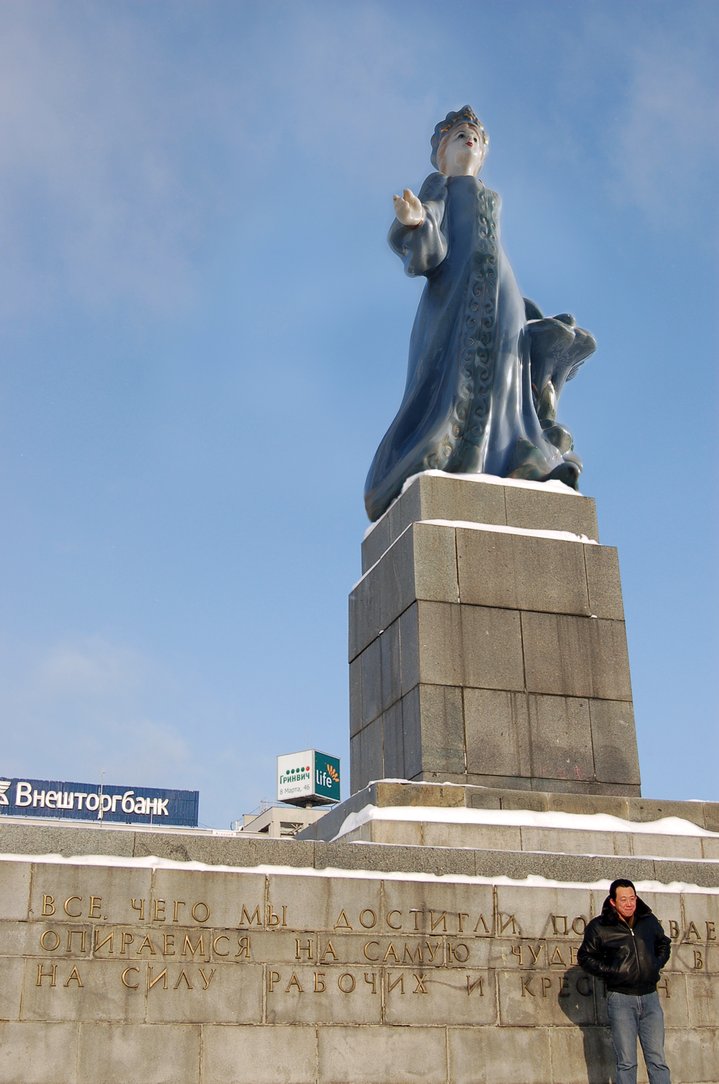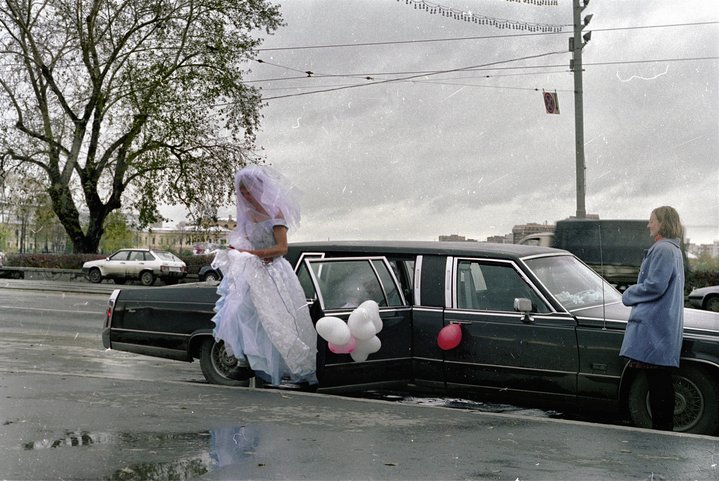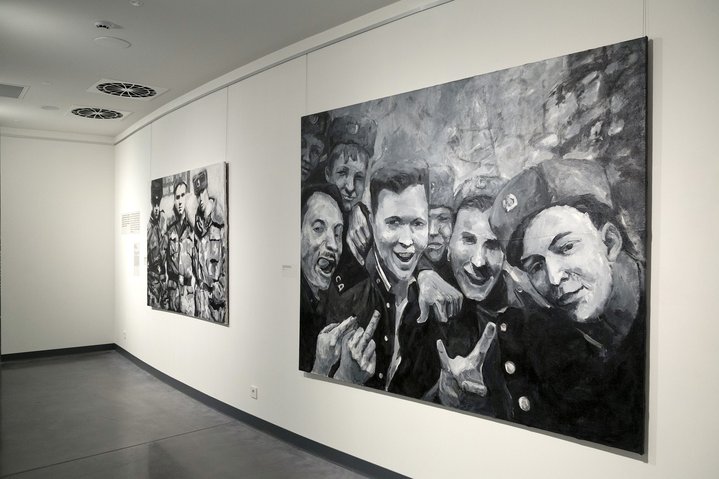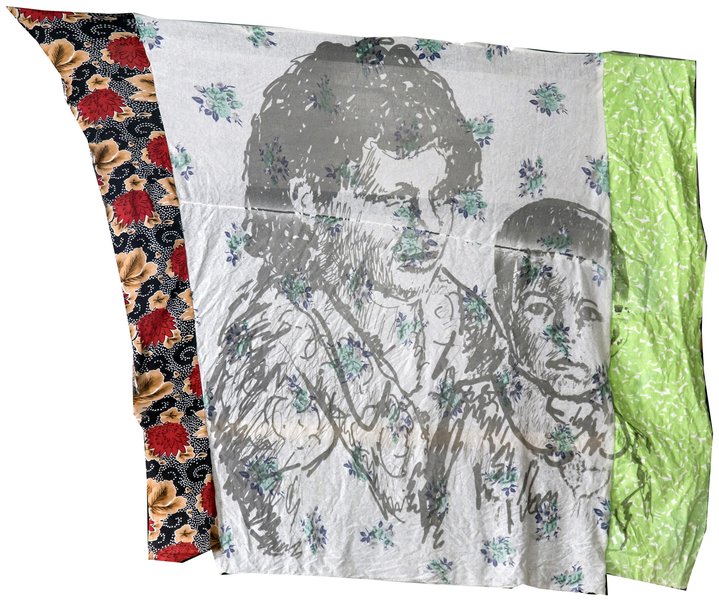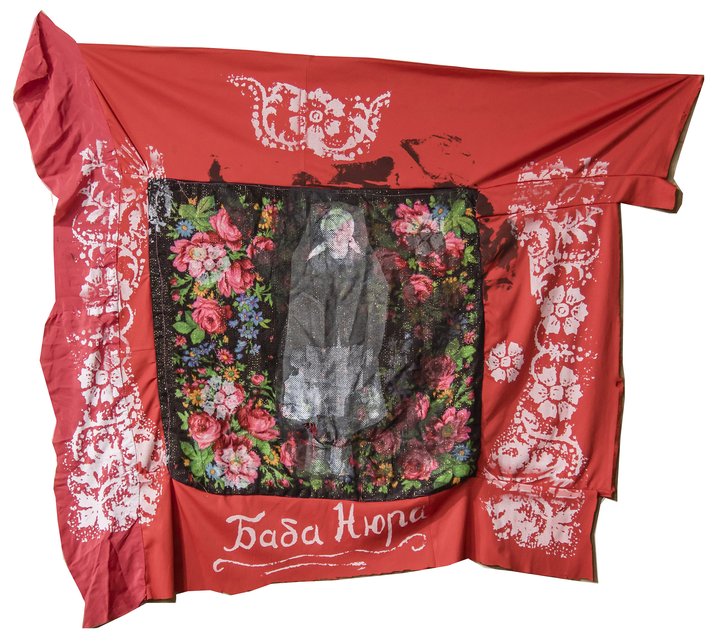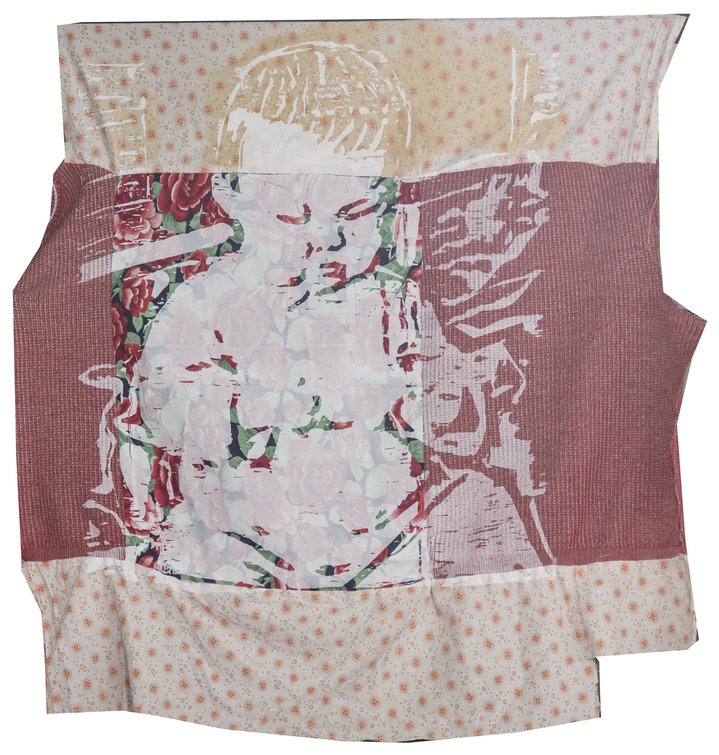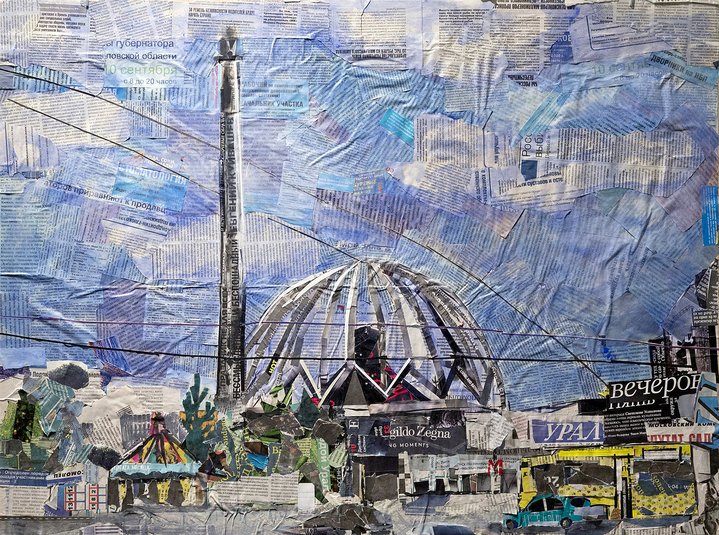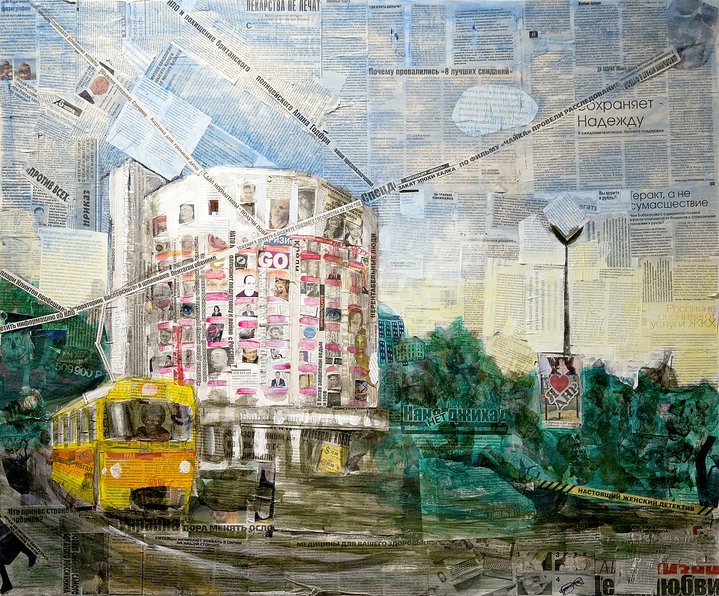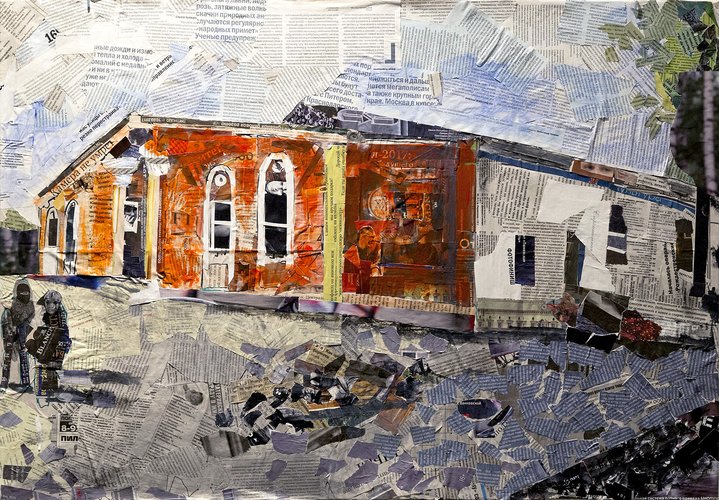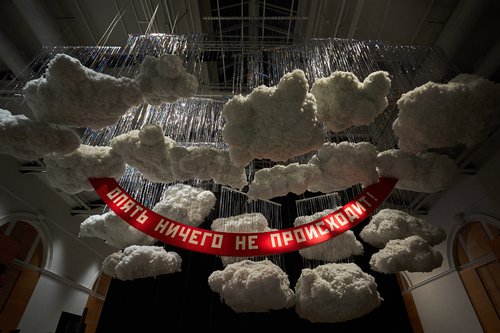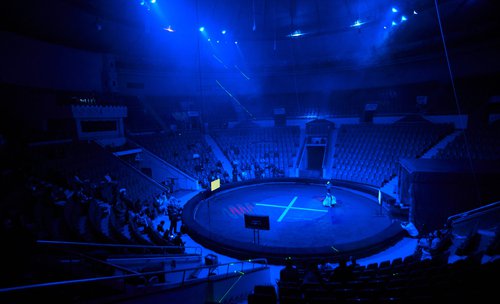Vladimir Seleznyov. Grandpa + Sasha. Rags, 2022. Fabric, silkscreen printing. Courtesy of the artist
Art Adventures of Tagilchanin Vladimir Seleznyov
In a creative collaboration with his mother during the pandemic, a Russian artist from the industrial town of Nizhny Tagil reflects on history and personal memories. Now he will miss the opening of his solo show in Ekaterinburg’s Yeltsin Centre, as recent history has been interfering with his own life.
A homebird, eschewing the call of the contemporary art world in Moscow or St Petersburg, artist and curator Vladimir Seleznyov (b. 1973) who was born in the Ural mountains — the industrial heart of Russia — has always found it difficult to leave. His career took an unusual route: he started out welding steel at a local metallurgic factory in his hometown of Nizhny Tagil, before studying art and eventually finding a job as a curator at the National Centre for Contemporary Art in Ekaterinburg, now a branch of Moscow’s State Pushkin Museum of Art. But he has had to leave – in a rush. “Even when I used to spend six months a year away from the Urals, I always knew when I was going back”, he reflects over Zoom from Astana, the capital of Kazakhstan. Along with hundreds of thousands of young Russian men the artist fled the country to avoid being drafted into the military last Autumn. He will not return for his solo exhibition opening at Ekaterinburg’s Yeltsin Centre on 22nd February. “It’s not the right time for opening speeches and celebrations”.
His father worked at a factory and his mother at a railway station but art has weaved its way through Seleznyov’s family. His grandfather Fyodor Kamenskykh (1907–1995) was a naïve artist, well-known in the region. The artist remembers how his relatives did not approve of his grandfather’s artistic inclinations. “Even I criticised his art when I was a boy, I did not know he might be offended”. Seleznyov’s own introduction to contemporary art happened while he was at college, through his aquaintance with a local artist Oleg Lystsov (Blyablyas) (b. 1976) and he took part in some of his performances. “We went down to the bottom of an open quarry in winter, dressed in black, and stood there in the snow, re-creating the outlines of constellations. Lystsov was photographing us from above,” he remembers. “It was then I realised that art could be an adventure”. Together with two classmates Yevgeny Goltsov and Ivan Snigiryov he formed an art collective called ‘Sehr Gut’ creating performances and video artworks marked by a preference for the absurd - there is a joke that goes deeper than you think at the first glance. When they moved from Nizhny Tagil to the regional capital in 2002, the trio celebrated this new stage of their lives with a performance called ‘Marrying Ekaterinburg’. They dressed up in white wedding dresses and drove in a hired limo around the city’s landmarks where couples usually are photographed on their wedding day. The three posed for the photographs, shocking passers-by.
There is a deceptive simplicity in this project allowing easy misinterpretation. The same quality is inherent in much of the artist’s solo work. For his ‘Unknown Monuments’ series Seleznyov photoshopped porcelain figurines from his grandmother’s apartment onto the pedestals of Ekaterinburg’s most famous monuments. The project attracted attention in the media where it was taken seriously and journalists started canvassing locals on whether the Soviet statues of Lenin should be replaced by anonymous babushkas and ballerinas. “It was a small, intimate project about my childhood memories. I never imagined it would cause a controversy.” Seleznyov says.
Such memories and the very nature of personal memory are recurring themes in his art as in his most recent project ‘Rags’. During the pandemic he could not visit his mother Nadezhda (b. 1948) in Nizhny Tagil, two hours drive away from Ekaterinburg. To cheer her up, one day, he asked her to sew together the clothes of deceased relatives that she had kept into big fabric squares. He printed images of the original owners of the clothes onto the fabrics, using a technique of silkscreen printing. The resulting collages evoke emotions and tell us how all that will one day remain of us are faded photographs and a pile of forgotten rags in a wardrobe. And - if we are lucky - memories in the minds of those who survive us.
Seleznyov works in a wide range of diverse media, from performance to painting, yet when asked about any one single principle which underlies his work, he answers, after a meditative pause, “Collage-ness”. Even ‘Metropolis’ is a collage, the artist adds, referring to his most popular work, an assemblage of household junk that turns into a model of a city when the lights go out. His subject and method fit each other perfectly. Memory is by nature patchy and non-linear: an ever-changing collage. But there is more to the project than family history, it also deals with history of the art of the region. ‘Rags’ is a nod to ‘Vyazanik’ by established Urals-born artist Leonid Tishkov (b. 1953), a figurehead for Seleznyov. Tishkov asked his mother to knit a wearable sculpture-costume out of rags cut from clothes of his relatives. It is thanks to Tishkov, Seleznyov says, that he discovered that he could make art with people who have never thought of themselves as artists, such as his mother. And there have been others - security guards at the Urals Industrial Biennale and museum attendants. Even ‘Metropolis’ has become a participatory project. It has become so popular that Seleznyov has been asked to make new versions for different cities, again and again, so that now there are thirteen iterations. When creating a version for the city of Kazan, he asked local residents to bring in their own garbage and to help him paint the installation with fluorescent paint.
The art of the Urals has its own traditions, Seleznyov believes. “It’s directed inwards, not outwards, distinct from the art in Moscow which has always looked internationally”. Having moved now to Kazakhstan, he presents himself as an Urals artist there. “You can leave the Urals but the Urals will never leave you”, he says. There might be some bitterness in these words as Seleznyov says them sitting in his rented room in Astana, but I feel a glimmer of hope as well.
Rags. An exhibition by Vladimir Seleznyov, with the participation of Nadezhda Seleznyova
Ekaterinburg, Russia
22 February – 16 April, 2023







